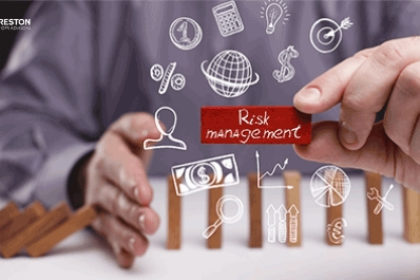
What is risk management?
Risk management is the ultimate tool to make effective business decisions. Practicing risk management is trying to reduce the factors that may have a negative effect on a business. Hence, the focus is laid more on the factors that can act positively for the business.
By managing risk properly, impacts of many unexpected events can be reduced.
A risk management plan can never be “final copy” or perfect.
Its success is directly proportional to the risk analysis, the management policies, planning, and activities made during the planning phase of the risk management plan.
- Risks must be properly accessed. That’s the main objective of a risk management plan.
- A risk management plan must be critically evaluated, especially at the early stage. It is helpful for the companies as they can discover the flaws before getting into action.
The steps mentioned below can perfectly analyze and evaluate a risk management plan.
1. Analyzing the problem:
- The risk management plan should be such that it requires keeping a note of all the events and activities of the plan.
- Checking for the problems that arise after implementing the plan and also evaluating the degree of damage done on the whole process is necessary.
- The critical ones should be jotted down to act upon.
- Identification of all the potential risks of loss to the business presented by the project must be done.
For example, phase two of the project is expected to take a month longer than the schedule to complete, which would result in an additional loss in finances and increase in labor costs to the business.
2. Matching the outcomes with the objectives of the risk management plan:
- The possible outcome of a risk management plan must be in sync with its predefined objectives. It helps in determining if the plan is fruitful.
- However, if the plan fails to match the expectations, then the issue becomes serious.
- An organization puts many efforts including its time, money and human capital. The main aim of the organization must remain intact and unharmed.
- The loss that is likely to occur must be estimated without any failure. The losses must be labeled in three columns, namely – low, medium and high.
3. Assessing the activities in the plan for their effectiveness:
- A thorough investigation of every activity of a risk management plan has to be carried out.
- An efficiency check of all the activities will help in discovering the flaws in their implementation. Hence, the whole plan can be analyzed systematically.
When to accept risks?
A lot of businesses choose to accept risks and not spend any resources to avoid them. Accepting a level of risk is necessary as:
- The cost of treatment is higher than the potential results of the risk
- The benefits of taking the risk outweigh the possible damage.
- The risk level works out to be low.
4. Evaluating the business environment:
- The business environment where a risk management plan is to be implemented must go through a thorough and critical evaluation.
- Assessment and analysis are required to decide the expectations.
- A check must also be made to find out if the existing risk management methods are enough to accept the risk.
5. Making changes in the faulty activities:
- After the evaluation process, a list of all the possible changes that can be made should be prepared.
- Try all these possible changes in the action plan to get the expected results.
- The process is time-consuming. But it is necessary for a successful implementation of the risk management plan.
6. Reviewing the activities that have been altered:
- After the changes have been made to the already existing activities and the events of the risk management plan, a final review should be done.
- The possible outcomes of the changed activities must be noted down. They have to match the objectives of the risk management plan.
Evaluating a risk management plan can sometimes be annoying.
The main reasons being:
- It is time-consuming
- It requires a lot of human effort
Let’s understand the benefits of a good risk management plan:
Managing risk can help a business to:
- Improve relations with customers, suppliers, employees and the community, by understanding their expectations and then managing the task in accordance with it.
- Increment the feeling of confidence among the staff by creating a safe working environment by having insurance of worker’s compensation and maintaining the workplace health and safety policies.
- Have an emergency management plan which helps a business to remain functional during any natural or economic disaster.
- Lower risk of damages directly results in reduced compliance and insurance cost.
- A good risk management plan always allows flexibility in changing the approach in case of any unexpected risks.
Kreston OPR has evaluated Risk Management Plans for many growth stage companies worldwide. Through this extensive, highly-specialized experience we help clients with the ins-and-outs of the process to prepare a Risk Management Plan.




